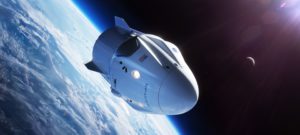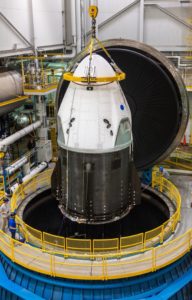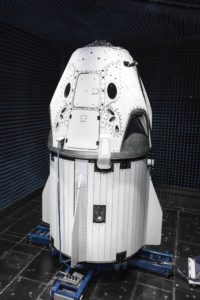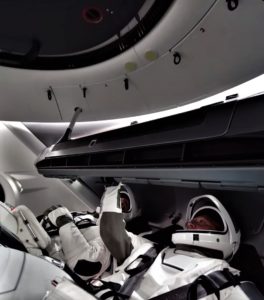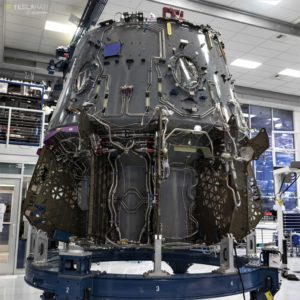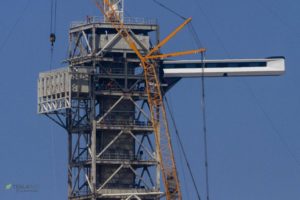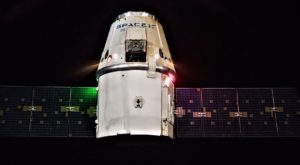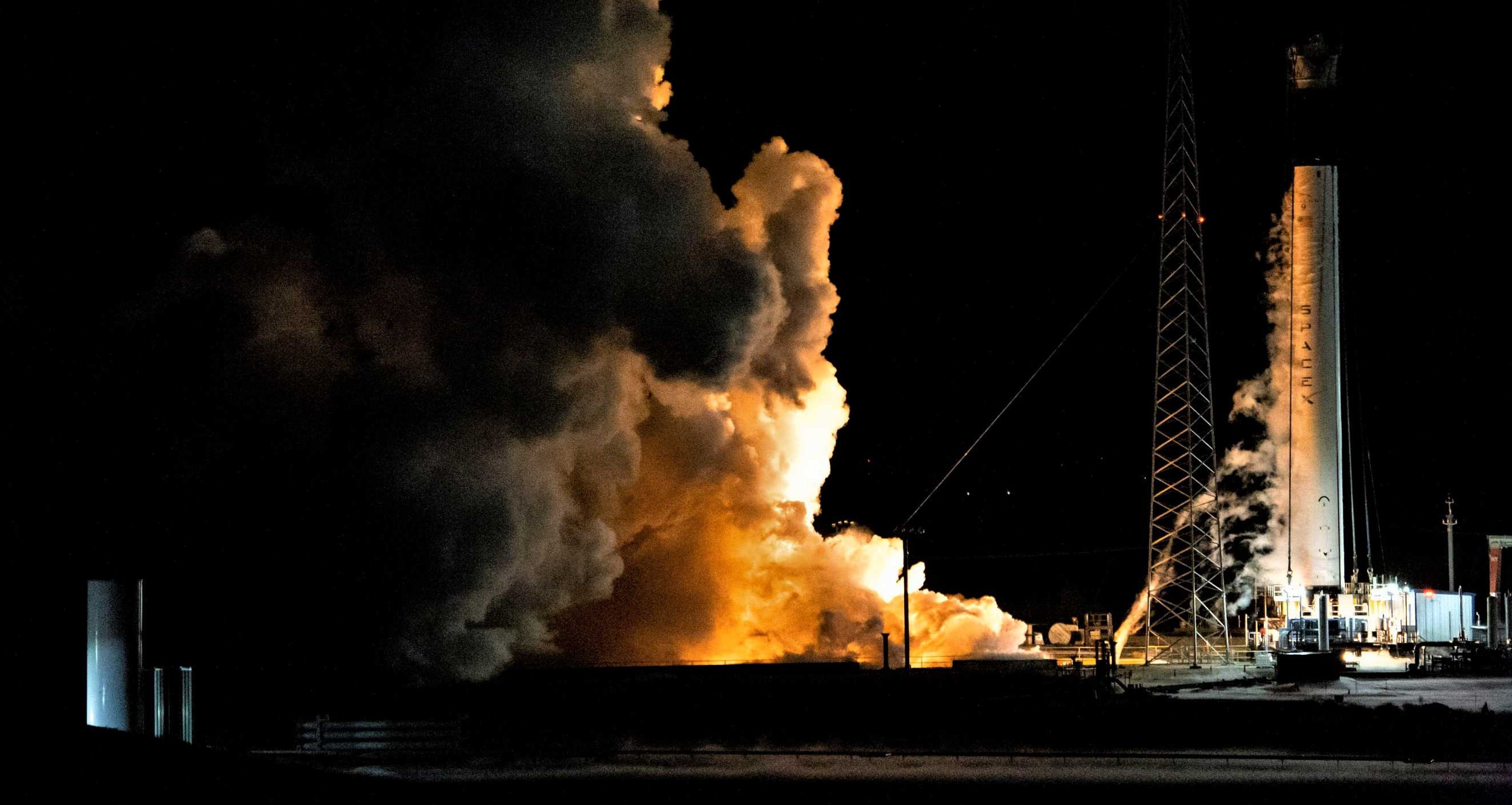

SpaceX
SpaceX’s Crew Dragon spacecraft nears launch debut as Falcon 9 tests wrap up
Known as Demonstration Mission 1 (DM-1), the inaugural flight of SpaceX’s Crew Dragon spacecraft is closer than ever before as the company wraps up ground testing of the rocket that will launch it.
Meanwhile, astronauts Doug Hurley and Bob Behnken are continuing to prepare for DM-2 – the first launch of Crew Dragon with crew onboard – by familiarizing themselves with SpaceX’s completed hardware, software, and procedures.
Commercial crew astronauts Bob Behnken and Doug Hurley are getting familiar with operating inside @SpaceX's Crew Dragon, fully suited! pic.twitter.com/41cqRwhzdp
— NASA Commercial Crew (@Commercial_Crew) November 2, 2018
Originally expected to occur before the end of 2017, Commercial Crew partners SpaceX, Boeing, and NASA have been forced to repeatedly delay the inaugural uncrewed and crewed launches of both the Crew Dragon (SpaceX) and Starliner (Boeing) crew transport vehicles, which have slipped roughly 3-6 months with every quarterly schedule update.
Generally speaking, the sources of those delays can be split evenly between NASA and its two commercial partners. A majority of the commercial-side slips can be attributed to unexpected hardware failures between the beginning of the Commercial Crew Program (CCP) and expected launch dates, with SpaceX experiencing two catastrophic failures of Falcon 9 (CRS-7 and Amos-6) and Boeing suffering a major anomaly while performing ground tests ahead of a Starliner pad-abort. Prior to the September 2016 Amos-6 failure of Falcon 9, SpaceX was arguably on track for the inaugural launch of Crew Dragon in late-2017/early-2018, having already completed a successful pad-abort demonstration in 2015 and eight successful launches since the CRS-7 failure.
- In this illustration, a SpaceX Crew Dragon spacecraft is shown in low-Earth orbit. (SpaceX)
- SpaceX’s Demo Mission-1 Crew Dragon seen preparing for vacuum tests at a NASA-run facility, June 2018. (SpaceX)
- The DM-1 Crew Dragon testing inside SpaceX’s anechoic chamber, May 2018. (SpaceX)
- NASA Astronaut Suni Williams, fully suited in SpaceX’s spacesuit, interfaces with the display inside a mock-up of the Crew Dragon spacecraft in Hawthorne, California, during a testing exercise on April 3. (SpaceX)
The Statue and the Hare
Aside from serious hardware failures, the rest of SpaceX’s Commercial Crew delays can be blamed on the company’s tendency to relentlessly iterate, improve, and generally modify both its hardware and software, to the extent that SpaceX’s Vice President of Production stated in mid-2018 that “[SpaceX has] never built any two vehicles identically”. For NASA’s often dysfunctionally and counterproductively risk-averse human spaceflight divisions, that sentence alone is probably enough to trigger panic attacks. As a result, SpaceX has been led to significantly change its style of operations over the last several years, reaching some sort of compromise that was more acceptable to NASA.
Further, despite the failures of CRS-7 and Amos-6, SpaceX continued to dramatically modify Falcon 9’s design – a major vehicle-wide upgrade known as Falcon 9 1.2 (Full Thrust, Block 1) debuted on the CRS-7 return-to-flight, while Amos-6 would have been the first launch of Falcon 9 Block 3 and likely failed as a result of faster fueling procedures and much colder propellant. Less than a year later, SpaceX debuted Falcon 9 Block 4. Roughly half a year after that, SpaceX debuted Falcon 9 Block 5, perhaps the most significant upgrade to the rocket yet. Ultimately, all changes made to Falcon 9 and Crew Dragon translate into additional work for NASA and SpaceX, known formally as “certification” and informally as exhaustive testing sandwiched by mountains of paperwork.
- DM-2 astronauts Bob Behnken and Doug Hurley train for their first flight in Crew Dragon. (NASA)
- SpaceX Crew Dragon capsule C203 – then assigned DM-2 – is seen here in August 2018. (Pauline Acalin)
- SpaceX installed its Crew Access Arm (CAA) in September 2018. (Tom Cross)
- SpaceX’s extraordinary custom spacesuit. Crew Dragon astronauts will wear this suit while inside the space capsule. (Pauline Acalin)
- A concert of Draco thrusters work to push Dragon away from the ISS and back towards Earth. (ESA)
In the case of the CCP, NASA itself has been a major source of delays as Boeing and SpaceX get much closer to launch dates and hardware is effectively completed, integrated, and ready to go. According to both Hans Koenigsmann (VP of Flight Reliability) and Gwynne Shotwell (President and COO) in the last few months, both executives were supremely confident that the hardware (Crew Dragon: capsule, trunk; Falcon 9: Merlins, upper stage, booster; Launch Complex 39A) would be ready for DM-1 no later than December 2018. Those statements imply that additional delays were unlikely to be a consequence of hardware readiness, indicating that delays beyond December would presumably be caused by paperwork and/or ISS scheduling.
In this sense, it could well be the case that NASA’s behind-schedule completion of critical certification and approval paperwork – paperwork that NASA alone required and knew it would have to finish prior to launch for the last several years – will or already have delayed SpaceX’s first Crew Dragon launch by at least a month. DM-1 is currently targeting a launch in January 2019.
For prompt updates, on-the-ground perspectives, and unique glimpses of SpaceX’s rocket recovery fleet check out our brand new LaunchPad and LandingZone newsletters!
News
SpaceX launches Ax-4 mission to the ISS with international crew
The SpaceX Falcon 9 launched Axiom’s Ax-4 mission to ISS. Ax-4 crew will conduct 60+ science experiments during a 14-day stay on the ISS.
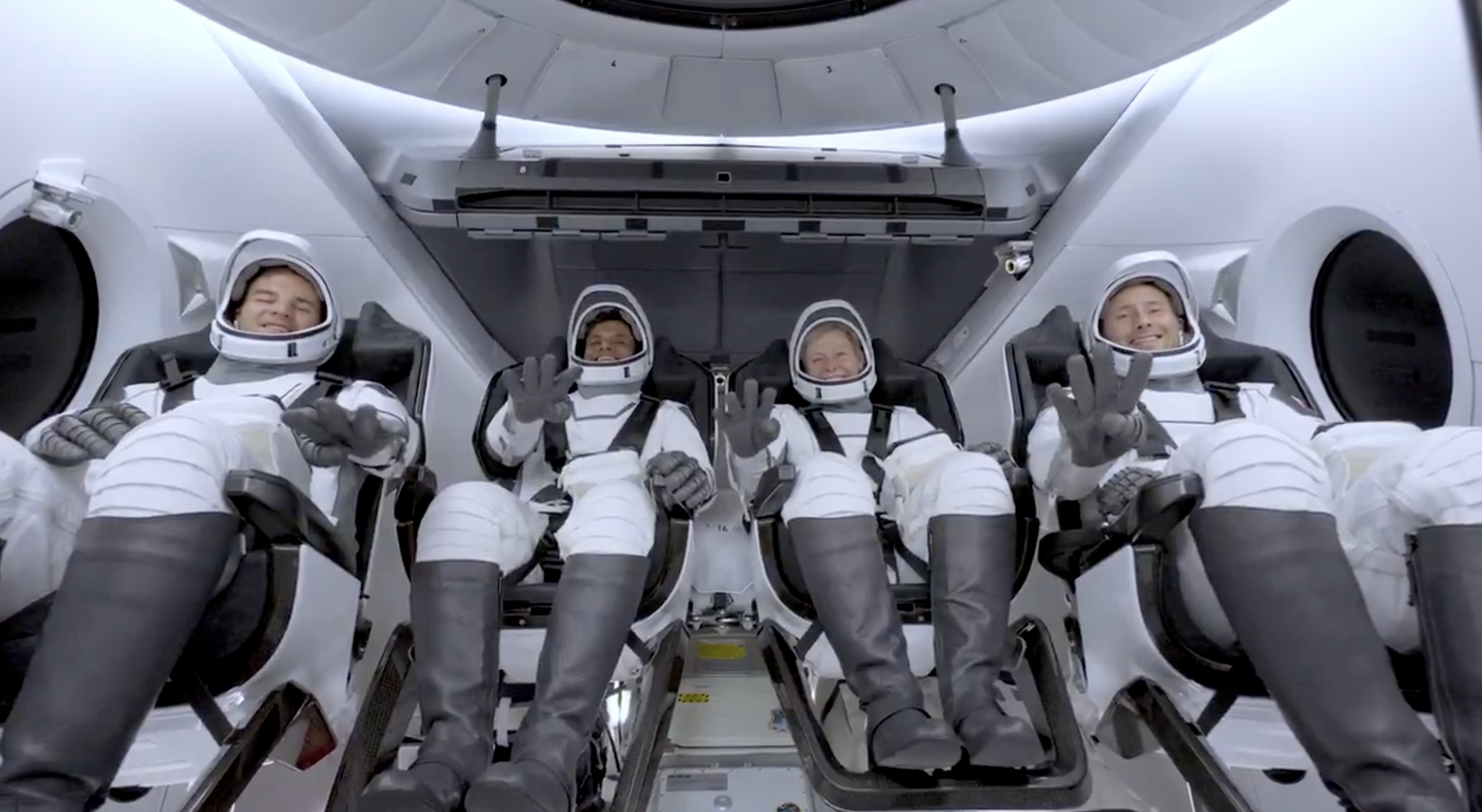
SpaceX launched the Falcon 9 rocket kickstarting Axiom Space’s Ax-4 mission to the International Space Station (ISS). Axiom’s Ax-4 mission is led by a historic international crew and lifted off from Kennedy Space Center’s Launch Complex 39A at 2:31 a.m. ET on June 25, 2025.
The Ax-4 crew is set to dock with the ISS around 7 a.m. ET on Thursday, June 26, 2025. Axiom Space, a Houston-based commercial space company, coordinated the mission with SpaceX for transportation and NASA for ISS access, with support from the European Space Agency and the astronauts’ governments.
The Ax-4 mission marks a milestone in global space collaboration. The Ax-4 crew, commanded by U.S. astronaut Peggy Whitson, includes Shubhanshu Shukla from India as the pilot, alongside mission specialists Sławosz Uznański-Wiśniewski from Poland and Tibor Kapu from Hungary.
“The trip marks the return to human spaceflight for those countries — their first government-sponsored flights in more than 40 years,” Axiom noted.
Shukla’s participation aligns with India’s Gaganyaan program planned for 2027. He is the first Indian astronaut to visit the ISS since Rakesh Sharma in 1984.
Axiom’s Ax-4 mission marks SpaceX’s 18th human spaceflight. The mission employs a Crew Dragon capsule atop a Falcon 9 rocket, designed with a launch escape system and “two-fault tolerant” for enhanced safety. The Axiom mission faced a few delays due to weather, a Falcon 9 leak, and an ISS Zvezda module leak investigation by NASA and Roscosmos before the recent successful launch.
As the crew prepares to execute its scientific objectives, SpaceX’s Ax-4 mission paves the way for a new era of inclusive space research, inspiring future generations and solidifying collaborative ties in the cosmos. During the Ax-4 crew’s 14-day stay in the ISS, the astronauts will conduct nearly 60 experiments.
“We’ll be conducting research that spans biology, material, and physical sciences as well as technology demonstrations,” said Whitson. “We’ll also be engaging with students around the world, sharing our experience and inspiring the next generation of explorers.”
SpaceX’s Ax-4 mission highlights Axiom’s role in advancing commercial spaceflight and fostering international partnerships. The mission strengthens global space exploration efforts by enabling historic spaceflight returns for India, Poland, and Hungary.
News
Starlink Cellular’s T-Mobile service to grow with third-party app data
From Oct 2025, T-Satellite will enable third-party apps in dead zones! WhatsApp, X, AccuWeather + more coming soon.

Starlink Cellular’s T-Mobile service will expand with third-party app data support starting in October, enhancing connectivity in cellular dead zones.
T-Mobile’s T-Satellite, supported by Starlink, launches officially on July 23. Following its launch, T-Mobile’s Starlink Cellular service will enable data access for third-party apps like WhatsApp, X, Google, Apple, AccuWeather, and AllTrails on October 1, 2025.
T-Mobile’s Starlink Cellular is currently in free beta. T-Satellite will add MMS support for Android phones on July 23, with iPhone support to follow. MMS support allows users to send images and audio clips alongside texts. By October, T-Mobile will extend emergency texting to all mobile users with compatible phones, beyond just T-Mobile customers, building on its existing 911 texting capability. The carrier also provides developer tools to help app makers integrate their software with T-Satellite’s data service, with plans to grow the supported app list.
T-Mobile announced these updates during an event celebrating an Ookla award naming it the best U.S. phone network, a remarkable turnaround from its last-place ranking a decade ago.
“We not only dream about going from worst to best, we actually do it. We’re a good two years ahead of Verizon and AT&T, and I believe that lead is going to grow,” said T-Mobile’s Chief Operating Officer Srini Gopalan.
T-Mobile unveiled two promotions for its Starlink Cellular services to attract new subscribers. A free DoorDash DashPass membership, valued at $10/month, will be included with popular plans like Experience Beyond and Experience More, offering reduced delivery and service fees. Meanwhile, the Easy Upgrade promotion targets Verizon customers by paying off their phone balances and providing flagship devices like the iPhone 16, Galaxy S25, or Pixel 9.
T-Mobile’s collaboration with SpaceX’s Starlink Cellular leverages orbiting satellites to deliver connectivity where traditional networks fail, particularly in remote areas. Supporting third-party apps underscores T-Mobile’s commitment to enhancing user experiences through innovative partnerships. As T-Satellite’s capabilities grow, including broader app integration and emergency access, T-Mobile is poised to strengthen its lead in the U.S. wireless market.
By combining Starlink’s satellite technology with strategic promotions, T-Mobile is redefining mobile connectivity. The upcoming third-party app data support and official T-Satellite launch mark a significant step toward seamless communication, positioning T-Mobile as a trailblazer in next-generation wireless services.
News
Starlink expansion into Vietnam targets the healthcare sector
Starlink aims to deliver reliable internet to Vietnam’s remote clinics, enabling telehealth and data sharing.

SpaceX’s Starlink expansion into Vietnam targets its healthcare sector. Through Starlink, SpaceX seeks to drive digital transformation in Vietnam.
On June 18, a SpaceX delegation met with Vietnam’s Ministry of Health (MoH) in Hanoi. SpaceX’s delegation was led by Andrew Matlock, Director of Enterprise Sales, and the discussions focused on enhancing connectivity for hospitals and clinics in Vietnam’s remote areas.
Deputy Minister of Health (MoH) Tran Van Thuan emphasized collaboration between SpaceX and Vietnam. Tran stated: “SpaceX should cooperate with the MoH to ensure all hospitals and clinics in remote areas are connected to the StarLink satellite system and share information, plans, and the issues discussed by members of the MoH. The ministry is also ready to provide information and send staff to work with the corporation.”
The MoH assigned its Department of Science, Technology, and Training to work with SpaceX. Starlink Vietnam will also receive support from Vietnam’s Department of International Cooperation. Starlink Vietnam’s agenda includes improving internet connectivity for remote healthcare facilities, developing digital infrastructure for health examinations and remote consultations, and enhancing operational systems.
Vietnam’s health sector is prioritizing IT and digital transformation, focusing on electronic health records, data centers, and remote medical services. However, challenges persist in deploying IT solutions in remote regions, prompting Vietnam to seek partnerships like SpaceX’s.
SpaceX’s Starlink has a proven track record in healthcare. In Rwanda, its services supported 40 health centers, earning praise for improving operations. Similarly, Starlink enabled remote consultations at the UAE’s Emirati field hospital in Gaza, streamlining communication for complex medical cases. These successes highlight Starlink’s potential to transform Vietnam’s healthcare landscape.
On May 20, SpaceX met with Vietnam’s Ministry of Industry and Trade, announcing a $1.5 billion investment to provide broadband internet, particularly in remote, border, and island areas. The first phase includes building 10-15 ground stations across the country. This infrastructure will support Starlink’s healthcare initiatives by ensuring reliable connectivity.
Starlink’s expansion in Vietnam aligns with the country’s push for digital transformation, as outlined by the MoH. By leveraging its satellite internet expertise, SpaceX aims to bridge connectivity gaps, enabling advanced healthcare services in underserved regions. This collaboration could redefine Vietnam’s healthcare infrastructure, positioning Starlink as a key player in the nation’s digital future.
-

 Elon Musk1 week ago
Elon Musk1 week agoTesla investors will be shocked by Jim Cramer’s latest assessment
-

 Elon Musk19 hours ago
Elon Musk19 hours agoxAI launches Grok 4 with new $300/month SuperGrok Heavy subscription
-

 Elon Musk3 days ago
Elon Musk3 days agoElon Musk confirms Grok 4 launch on July 9 with livestream event
-

 News7 days ago
News7 days agoTesla Model 3 ranks as the safest new car in Europe for 2025, per Euro NCAP tests
-

 Elon Musk2 weeks ago
Elon Musk2 weeks agoA Tesla just delivered itself to a customer autonomously, Elon Musk confirms
-

 Elon Musk1 week ago
Elon Musk1 week agoxAI’s Memphis data center receives air permit despite community criticism
-

 Elon Musk2 weeks ago
Elon Musk2 weeks agoTesla’s Omead Afshar, known as Elon Musk’s right-hand man, leaves company: reports
-

 News2 weeks ago
News2 weeks agoXiaomi CEO congratulates Tesla on first FSD delivery: “We have to continue learning!”

